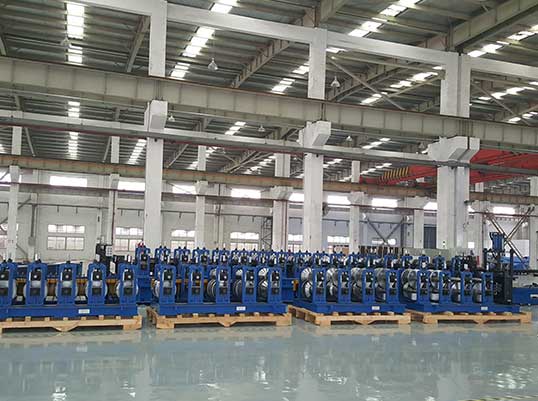Navigation Menu
Contact Us
- Email:
- info@wxavatar.com
- Address:
- Yurong Village, Yuqi Street, Huishan District, Wuxi, China.
Release Date:Mar 19, 2025 Visit:53 Source:Roll Forming Machine Factory
Roll forming is a preferred manufacturing process for solar racking systems due to its unique advantages tailored to the demands of solar energy infrastructure. Here’s a structured breakdown of the key reasons:
1.Customization & Flexibility:
Roll forming allows for the creation of complex, tailored profiles to meet diverse project requirements. Adjustments in roller dies enable variations in cross-sectional shapes without costly retooling, accommodating different panel layouts and environmental conditions.
2.Cost Efficiency:
As a continuous process, roll forming minimizes material waste and labor costs. High-speed production of long, consistent sections reduces per-unit costs, making it economical for large-scale solar installations.
3.Strength & Durability:
The process enhances structural integrity through strategic bends and ribs, enabling the use of high-strength, corrosion-resistant materials like galvanized steel or aluminum. This ensures longevity under harsh weather conditions (wind, snow, seismic activity).
4.Lightweight Design:
Optimized shapes allow for thinner gauges without compromising strength, reducing weight for easier transport and installation while minimizing structural load on rooftops or ground mounts.
5.Precision & Consistency:
Tight tolerances in roll forming ensure uniform components, simplifying assembly and reducing on-site errors. This precision is critical for reliable, scalable solar arrays.

6.Sustainability:
Efficient material use and compatibility with recyclable metals align with the eco-friendly goals of solar projects. Reduced waste and energy consumption further enhance environmental benefits.
7.Rapid Production:
High-volume output meets the solar industry’s demand for quick turnaround, accelerating project timelines and deployment.
8.Corrosion Resistance:
Integration of coatings (e.g., galvanization) during processing enhances resistance to weathering, crucial for outdoor longevity.
9.Ease of Integration:
Features like pre-drilled holes or interlocking designs simplify attachment of panels and connectors, facilitating modular assembly and adjustable configurations for optimal sun exposure.
10.Transport Efficiency:
Long sections can be cut to size on-site, and nested designs reduce shipping volume, lowering logistics costs.
Conclusion: Roll forming strikes an optimal balance between cost, performance, and adaptability, making it a cornerstone technology in the production of efficient, durable, and scalable solar racking systems. Its benefits are evident in widespread global adoption, supporting the rapid growth of renewable energy infrastructure.